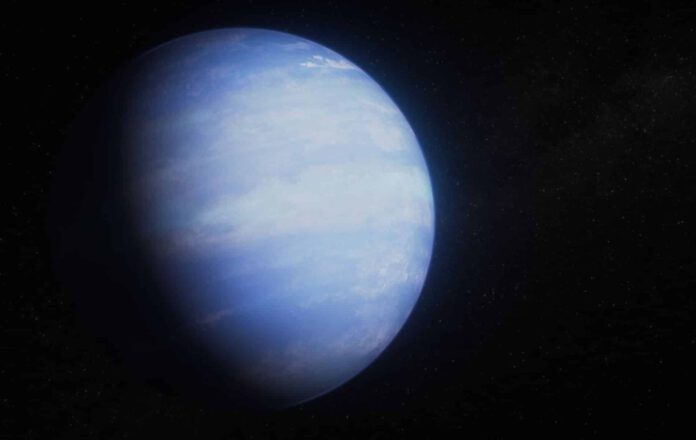
Astronomers have long been puzzled by WASP-107b. With a mass ten times smaller than Jupiter but a volume about 75 percent of Jupiter’s, the planet has an extremely low density. This classifies it as one of the so-called “cotton candy planets,” planets with a density comparable to that of the extremely airy confection. While we know about several cotton candy planets, WASP-107b stands out as an exception. Most such planets are significantly warmer and heavier than WASP-107b, raising questions about how WASP-107b became a cotton candy planet.
Mystery
“Based on the radius, mass, and age, we thought WASP-107b had a very small, rocky core surrounded by a massive amount of hydrogen and helium,” explains researcher Luis Welbanks. “But it’s difficult to explain how such a small core could gather so much gas and abruptly stop before reaching the mass of Jupiter.”
Is the Core Larger?
Could the core of WASP-107b be larger than previously thought? Welbanks and his colleagues acknowledge this as a possibility. However, it still doesn’t explain why WASP-107b has such a massively inflated atmosphere. A heavier core would have cooled since the planet’s formation, making it unlikely for the atmosphere to expand so significantly. Even though WASP-107b’s parent star provides some heat, it’s not enough to cause the gas in the atmosphere to expand so much.
The Role of the James Webb Space Telescope
To solve this mystery, Welbanks and his team turned to the James Webb Space Telescope. “WASP-107b is an intriguing target for Webb because the planet is significantly cooler and more Neptune-like in mass compared to other low-density planets – the so-called hot Jupiters – we’ve studied so far,” says researcher David Sing.
Findings
The research revealed that the core of WASP-107b indeed has more mass than previously believed. Additionally, the interior of the planet is much warmer than initially assumed, thanks to tidal forces. These findings were published in the journal Nature.
Atmosphere Composition
The team based their findings primarily on observations from the James Webb Space Telescope and supplemented them with data from the Hubble Space Telescope. The telescopes revealed that WASP-107b’s atmosphere contains water vapor, methane, carbon dioxide, carbon monoxide, sulfur dioxide, and ammonia. However, one surprising observation was the atmosphere’s significantly lower methane content, about a thousand times less than expected based on the presumed temperature of WASP-107b.
Methane
Why is the methane content so low? “Methane is unstable at higher temperatures,” explains Sing. “Our detection of very little methane despite finding other carbon-bearing molecules suggests that the planet’s interior is much warmer than we thought.” This internal warmth causes the atmosphere to balloon, resulting in the planet’s large size and low density.
Tidal Forces
This raises the question of where the warmth originates. The researchers found the answer in tidal forces. WASP-107b has an oval-shaped orbit around its parent star, taking just 5.7 days to complete. This causes significant variations in the gravitational pull from the star, stretching and compressing the planet, which in turn heats it internally.
Core Estimation
With the realization that WASP-107b generates enough internal heat to expand its atmosphere, the researchers estimated the core’s size. “Knowing the energy inside the planet and the composition of its atmosphere and core elements, we can calculate the core’s mass,” says researcher Daniel Thorngren. Calculations suggest that the core must be at least twice as heavy as previously assumed.
No More Secrets
With these findings, WASP-107b has revealed many of its secrets, states researcher Mike Line. “The Webb data show that planets like WASP-107b don’t necessarily need to form in a bizarre way with a super small core and a huge gas envelope. Instead, we can take something like Neptune, increase its temperature, and inflate its atmosphere to get a similar outcome.”
This research is just the beginning, promises Sing. “Examining the interiors of planets hundreds of light-years away sounds almost impossible. But with knowledge of a planet’s mass, radius, atmospheric composition, and internal temperature, we have the pieces needed to understand what’s inside and how heavy the core is. This is something we can now do for numerous gas giants in various systems.”











